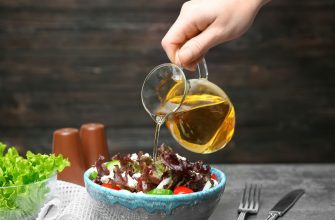Unraveling the science behind cooking can transform your culinary skills and help you create delicious, nutritious meals. In this article, we will explore essential concepts in the science of cooking, from heat transfer to food chemistry, to elevate your skills in the kitchen.
-
Content
Heat Transfer: The Key to Perfect Cooking

Understanding how heat moves and interacts with food is crucial for successful cooking. There are three main types of heat transfer: conduction, convection, and radiation.
- Conduction: This is the direct transfer of heat between two objects in contact, such as a pan and the food inside it. Stir-frying is an example of cooking with conduction.
- Convection: Involves the movement of heated molecules through a fluid, such as air or liquid. Baking and boiling are examples of convection cooking.
- Radiation: Heat is transferred through electromagnetic waves. Grilling and broiling utilize radiation to cook food.
Mastering heat transfer methods can help you achieve the desired texture and doneness for your dishes.
-
Food Chemistry: The Magic Behind Flavors and Textures

The chemical reactions that occur during cooking can profoundly impact the taste and texture of your food. Here are some essential concepts to understand:
- Maillard Reaction: This is the process that occurs when proteins and sugars in food are heated, resulting in browning and the creation of complex flavors.
- Caramelization: Occurs when sugars are heated, leading to a sweet and slightly bitter flavor and a golden-brown color.
- Gelatinization: The process by which starches absorb water and swell when heated, thickening sauces and creating a creamy texture.
- Emulsification: The blending of two liquids, such as oil and water, which typically do not mix well. Emulsification creates smooth sauces and dressings.
Understanding these chemical reactions can help you enhance the flavors and textures of your dishes.
-
The Importance of Time and Temperature

Cooking food at the correct temperature and for the right amount of time is crucial for achieving the desired results. Overcooking can lead to dry, tough food, while undercooking can result in uneven cooking and potential food safety issues.
Invest in a reliable thermometer and familiarize yourself with the optimal cooking temperatures for various types of food. Additionally, learn the different stages of cooking, such as rare, medium, and well-done, to ensure your dishes are cooked to perfection.
-
Balancing Flavors for Tasty Meals

Creating a harmonious balance of flavors is essential for delicious, satisfying meals. The five basic tastes are sweet, salty, sour, bitter, and umami. Learning how to combine and balance these tastes can help you create mouthwatering dishes that keep your taste buds craving more.
Experiment with different ingredients, such as herbs, spices, and condiments, to find the perfect balance of flavors in your cooking.
Conclusion
Understanding the science behind cooking can elevate your culinary skills and help you create delectable, satisfying meals. By mastering heat transfer, food chemistry, time and temperature management, and flavor balancing, you can transform your time in the kitchen into a fulfilling and delicious experience.


